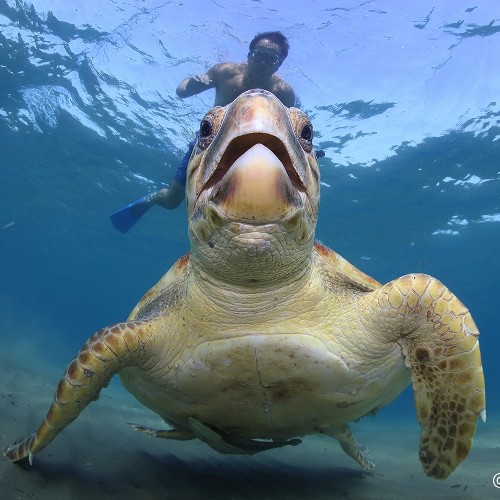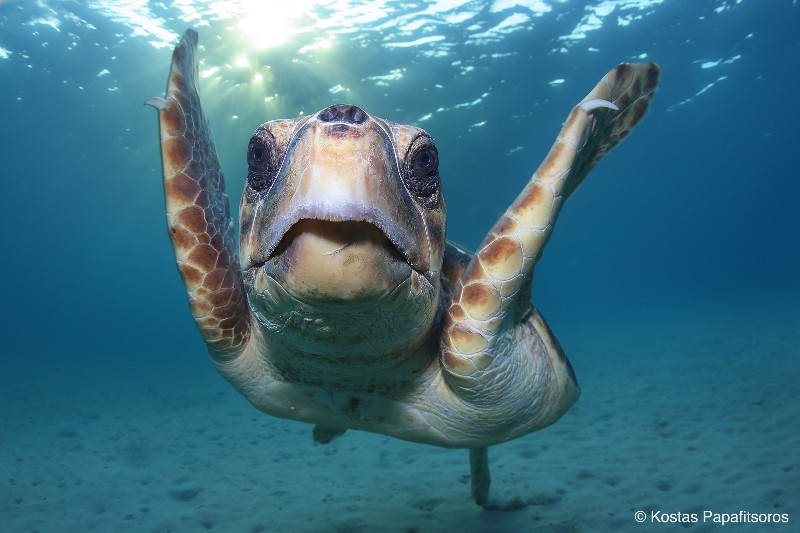Mathematical modelling shows that Instagram can be used in sea turtle conservation
Tourism and social media are often blamed for putting pressure on wildlife, but is there a way that social media can be harnessed for good and actually support conservation?

Loggerhead turtle and swimmer
A team of researchers from Queen Mary and the Czech Technical University have shown that Instagram is a useful tool for measuring the pressures of tourism on loggerhead turtles in Zakynthos, Greece, and one that can be used by conservationists moving forward.
Dr Kostas Papafitsoros, Lecturer in Mathematical Data Science told us: “The central idea is that the more often an individual animal appears on social media, the more viewing pressure it is subjected to. We modelled the flow of information from a human-turtle interaction to that same event appearing in social media in a detectable way. This resulted in a stochastic model that allowed us to answer questions like: how did the viewing pressure on the sea turtles of Zakynthos change between June 2019 and June 2020? What about first week of August 2020 versus first week of August 2021?”
How the pandemic played its part
By comparing data sets from 2019, 2020 and 2021, the researchers were able to test their model over a period where tourism levels fluctuated enormously due to the COVID-19 pandemic. The temporal fluctuations in tourism correlated with the number of images being uploaded to Instagram during the same period, proving the effectiveness of this mathematical model to measure impact of tourism on wildlife viewing.
As expected, the COVID-19 pandemic reduced the tourist pressure on turtles, with the overall pressure during 2020 just 25% of that of 2019, rising to 50% in 2021.
Social media as an accessible tool for conservation
Dr Gail Schofield, Lecturer in Aquatic Ecology at Queen Mary, said: “With 80% of social media users uploading their photos within two days, this allows conservationists to mine data in real time and act quickly if intervention is required. With little to no overheads, this is an accessible model for measuring the impact of tourism that smaller NGOs and grassroots conservation projects can use.”
What’s next for this project?
Individual Loggerhead turtles are easily identifiable thanks to their unique markings, so this presents an opportunity for conservationists to use social media images to measure the impact of tourism on individual creatures or groups of turtles. Wildlife conservation projects are increasingly using large scale imaging datasets to answer important ecological questions, and most of these projects rely on Photo-Identification, the process of identifying individual animals by their unique external morphological patterns (e.g., facial scales in sea turtles). However, the process of identification is often hindered by the low-quality images , so the next step for Queen Mary’s research team is to develop artificial intelligence methods to enhance low quality images of individual animals, thus facilitating their identification. The School of Mathematical Sciences is currently recruiting for a PhD project that would directly support this work. Please visit Data-driven Image Processing Methods with Applications to Wildlife Conservation for more information.
Social media and tourism have a complicated relationship and Instagram has undeniably contributed to the increased interaction between humans and wildlife. However, social media also provides a unique insight into these interactions, which can be used inform policy and decision-making moving forward.
